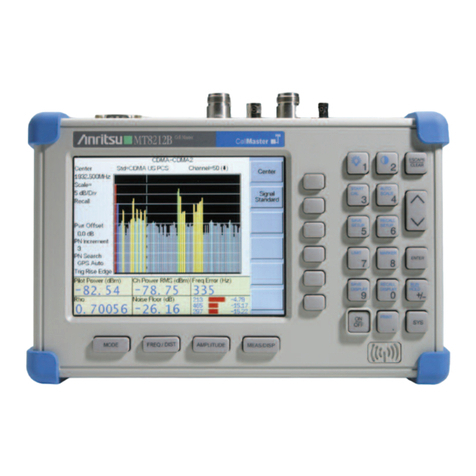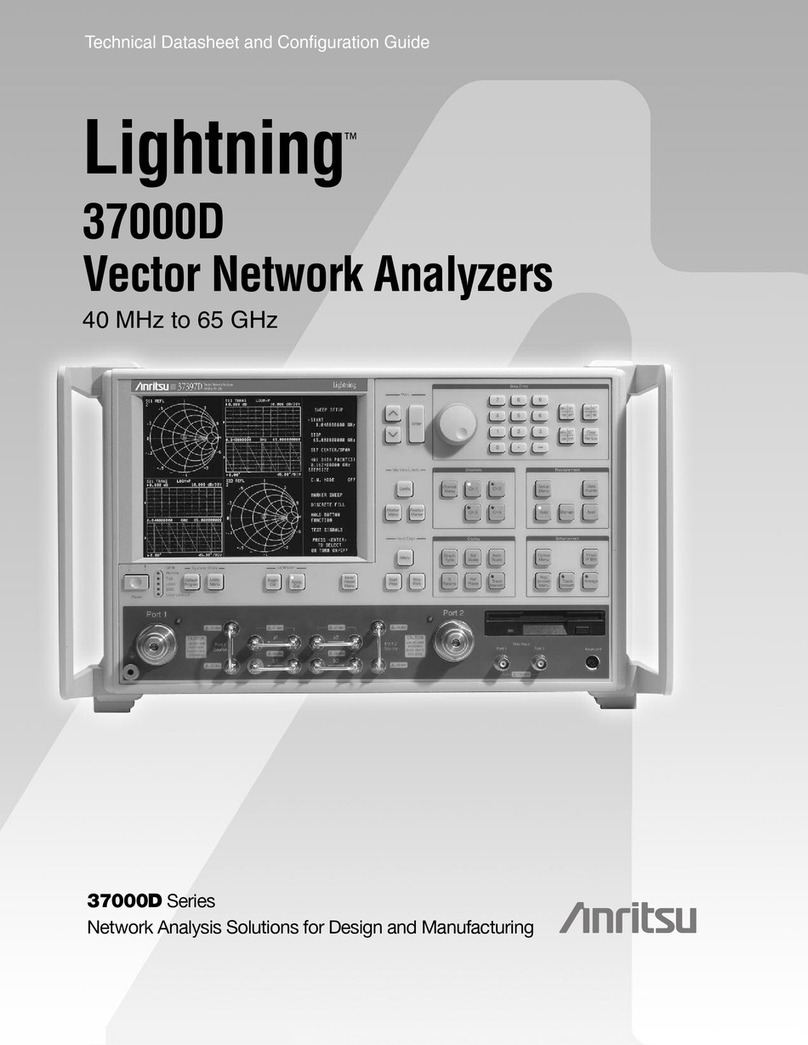
The Handheld Software Tools program can display measurements made with the Site Mas-
ter (SWR, return loss, cable loss, distance-to-fault, field strength, occupied bandwidth,
channel power, adjacent channel power and interference analysis) as well as providing
other functions, such as converting display modes and Smith charts. Refer to Chapter 11,
Handheld Software Tools, for more information.
The following items are supplied with the basic hardware:
·10580-00079 S331D/S332D Site Master User's Guide
·2300-347 Anritsu Handheld Software Tools CDROM
·48258 Soft Carrying Case
·633-27 Rechargeable NiMH Battery
·40-168 AC-DC Adapter with Power Cord
·806-141 Automotive Cigarette Lighter/12 Volt DC Adapter
·800-441 Serial Interface Cable (null modem type)
·551-1691-R USB to RS232 Adapter Cable
·One year Warranty (includes battery, firmware, and software)
Options
·Option 2 2 MHz Frequency Extension (S331D/S332D)
·Option 5 Power Monitor - (S331D/S332D, requires external detector)
·Option 6 Frequency Converter Control Module Interface (S332D)
·Option 10A Bias Tee (S332D)
·Option 16 6 GHz Frequency Extension, Cable and Antenna Analyzer
(S331D/S332D)
·Option 19 High Accuracy Power Meter (S331D/S332D, sensor not included)
·Option 21 Transmission Measurement (S332D)
·Option 25 Interference Analyzer - (S332D, requires directional antenna)
·Option 27 Channel Scanner (S332D)
·Option 28 CW Signal Generator - (S332D, requires CW Signal Generator
Kit)
·Option 29 Power Meter, Internal (S331D/S332D)
·Option 31 GPS - Requires GPS Antenna (S331D/S332D)
·Option 50 T1/E1 Analyzer (S331D)
NOTE: For the Site Master S331D, Options 5 and 50 are mutually exclusive.
That is, the Site Master S331D can be configured with either Option 5, Power
Monitor, or Option 50, T1/E1, but not both.
For the Site Master S332D, Options 5 and 6 are mutually exclusive. That is, the
Site Master S332D can be configured with either Option 5, Power Monitor, or
Option 6, Frequency Converter Interface, but not both.
1-2
Chapter 1 General Information





























